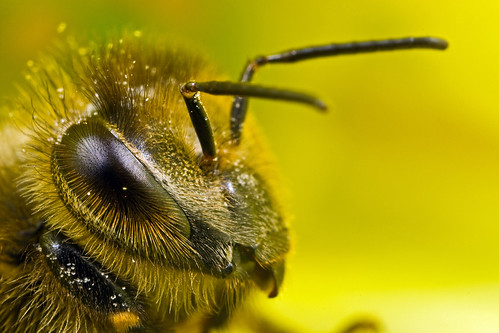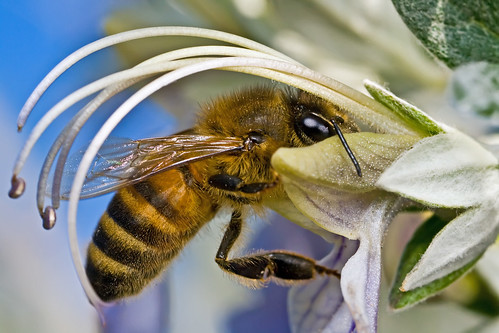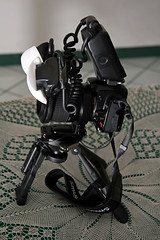This won’t be a review –there are at least half a dozen web sites out there written by people more qualified than me. This is just my initial few days with the 40D –an excellent camera for macro if I can just iron out a few bugs…
I'm having problems with flash exposure that I haven't been able to wrap my head around yet. I've solved a couple of problems already: With the 20D I had a bad habit of hitting the AE / FE Lock button with my thumb. On the 20D I could disable the button but all I can do on the 40D is switch its function with the AF ON button -and that just places it closer to my wandering digit. So I've started to get very conscious of that button and not hit it.
I have also taken a few shots where the flash fired at full power –ruined what would have been a real “wall hanger”. That kind of blow out is usually caused by the camera not communicating flash duration information with the flash, or the data is scrambled in transmission. Normally the fix is to make sure that the flash is seated properly on the camera’s hot shoe and tightened down. Unfortunately it’s not happening from the beginning of a shooting session –the camera and flash will be operating just fine and all of a sudden the flash will pump out enough light to genetically alter the critter I’m shooting. If you see a bee with six wings it’s my fault…
The 40D’s flash shoe is different, in that it was designed to mate up with the new weather resistant 580EX II. Maybe the MT-24EX just isn’t seating properly, the contacts on the flash need cleaning (a red eraser works very well for scrubbing corrosion), or I’m just not tightening the flash down enough. I’ll get back to you when I know something definite…
The last part of my recent adventure with the 40D is related to shooting at ISO 200. I’m use to shooting more at ISO 100 with the Xti (due to noise issues) but with the 40D I want to wean myself off of it and shoot at higher ISOs. It seems to me that, when shooting at ISO 200 and at life size in bright sunlight, there is so much natural light getting into the camera that it’s difficult for the flash to fire without blowing something out. The flash heads of the MT-24EX are just too close to the subject when I have them on the Canon mount. Setting the FEC to -1/3 to -2/3 has eliminated most of the “hot spots”. There does seem to be a difference in the way that the metering system in the Xti and the 40D. I think the Xti under exposed a lot, even the flash. The 40D is giving me more accurate exposures and I’m going to need some time to get use to it.
Can I recommend the 40D for macro? Sure –easy to do with the large bright view finder. But I think I should go back to ISO 100 for a while, iron out issues while I’m in my comfort zone, and then experiment with new techniques…
Footnote: I think my exposure problems are due to the light meter in the 40D -it's VERY accurate! The Xti would always under expose a little...










